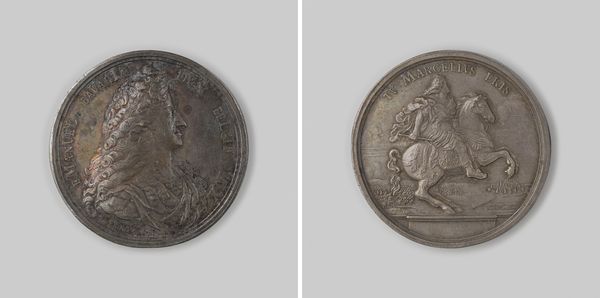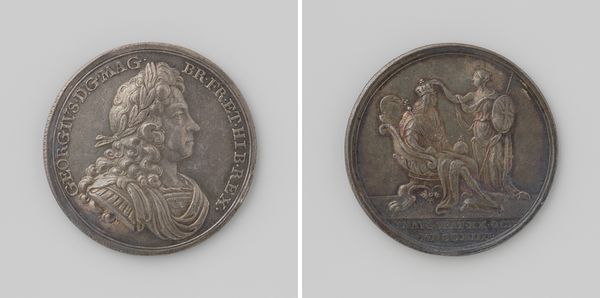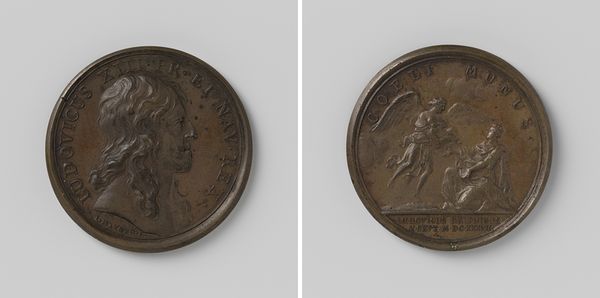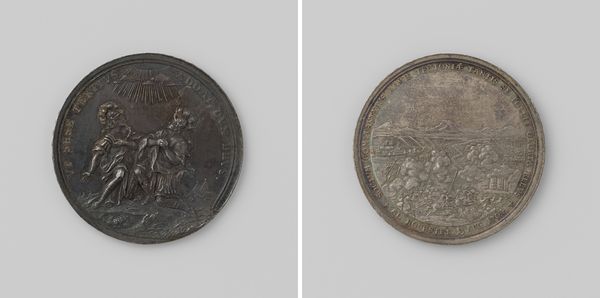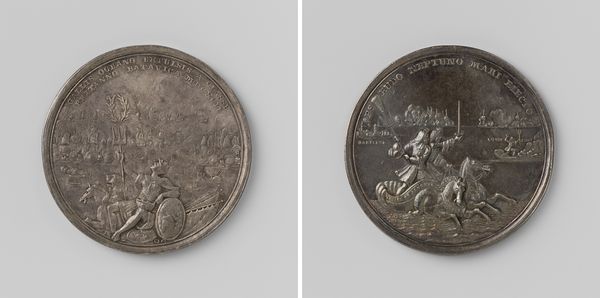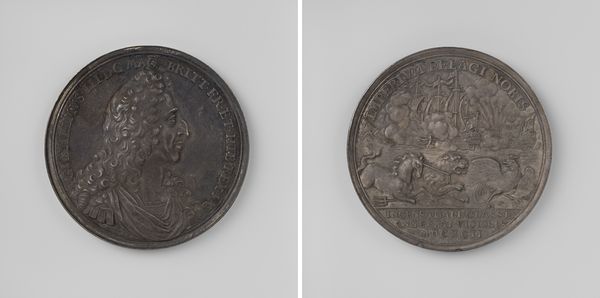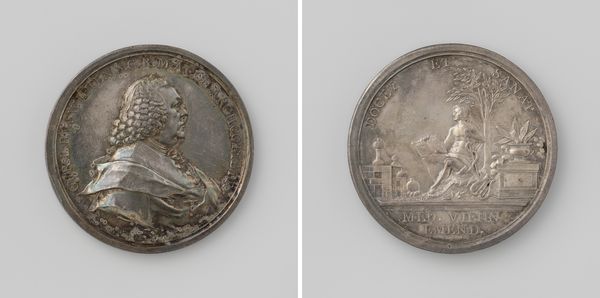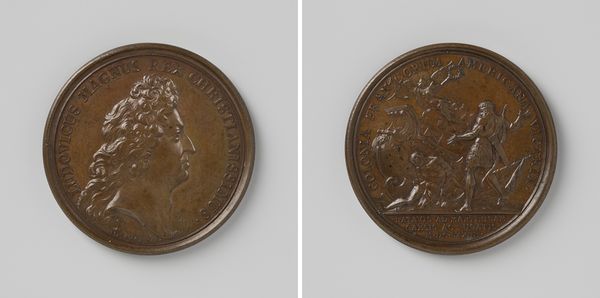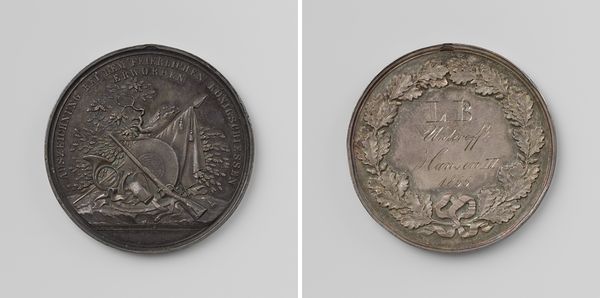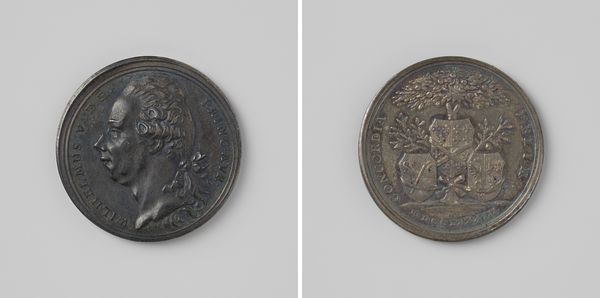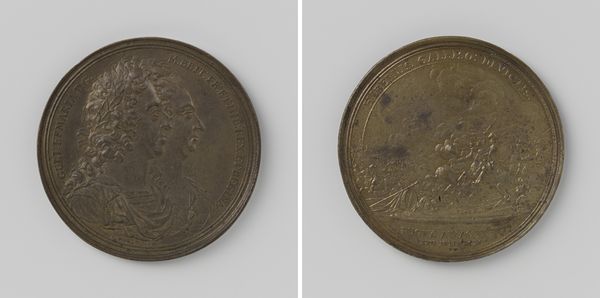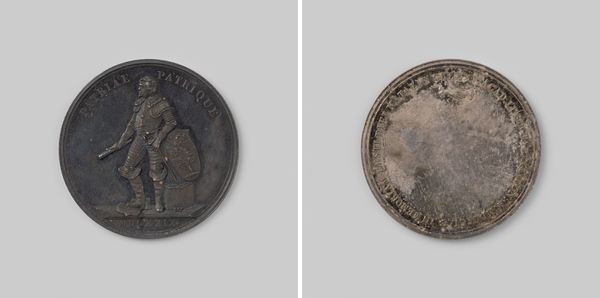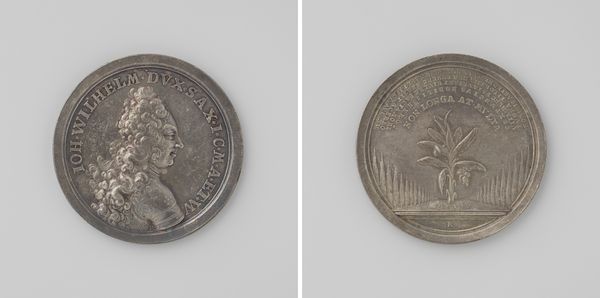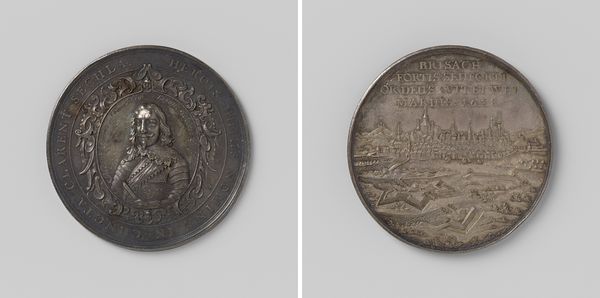
Tekenakademie 'Hierdoor tot Hooger' te Rotterdam, penning van de eerste grootte, penning uitgereikt aan H. Cramer voor Doorzigtkunde 1820 - 1850
0:00
0:00
drawing, metal, sculpture
#
drawing
#
neoclassicism
#
metal
#
sculpture
#
sculpture
Dimensions: diameter 5.2 cm, weight 66.48 gr
Copyright: Rijks Museum: Open Domain
Curator: This fascinating neoclassical piece is a medal from the early to mid-19th century, specifically between 1820 and 1850. The Rijksmuseum titles it, "Tekenakademie 'Hierdoor tot Hooger' te Rotterdam, penning van de eerste grootte, penning uitgereikt aan H. Cramer voor Doorzigtkunde." Quite a mouthful, isn’t it? Editor: Indeed. My immediate impression is one of meticulous detail; a sense of restrained grandeur conveyed through this relatively small, circular form. The cold, grey tone of the metal contributes to its almost austere feel. Curator: Notice how the composition on one side is meticulously balanced, anchored by the seated figure and the inscription circling the edge. The line describing her task, working towards a "higher understanding" creates a visual harmony. It's interesting to consider the implications of such a declaration for artistic and intellectual achievement. Editor: Yes, but let's think about what went into crafting something like this. The minting process itself would have required a certain level of technical skill—the creation of dies, the application of force, not to mention the sourcing and refining of metals to create the coin’s alloy. Curator: Precisely. The other side featuring the wreath adds another layer; a symbol of accomplishment, framing the dedication to H. Cramer. There’s a beautiful tension between the object’s intrinsic aesthetic value and the purpose it serves. Editor: Absolutely. I wonder how this piece would have been perceived by craft guilds of earlier times? Would they have deemed this a technical art, a piece of labor? In any case, you just know the work was intensive. Curator: Considering that context elevates our understanding. In studying the medal's design elements we see it adheres perfectly to Neoclassical ideals of order and clarity. But viewed as an artifact born from specific material processes, and socio-economic structures we begin to comprehend not just its visual rhetoric, but the world that gave birth to it. Editor: And in doing so we acknowledge that 'beauty' and 'purpose' exist not in isolation, but inextricably linked by material reality and those who shape it. Curator: A potent intersection, indeed. Editor: This piece of art provides a valuable, enduring view on materialist concerns.
Comments
No comments
Be the first to comment and join the conversation on the ultimate creative platform.
